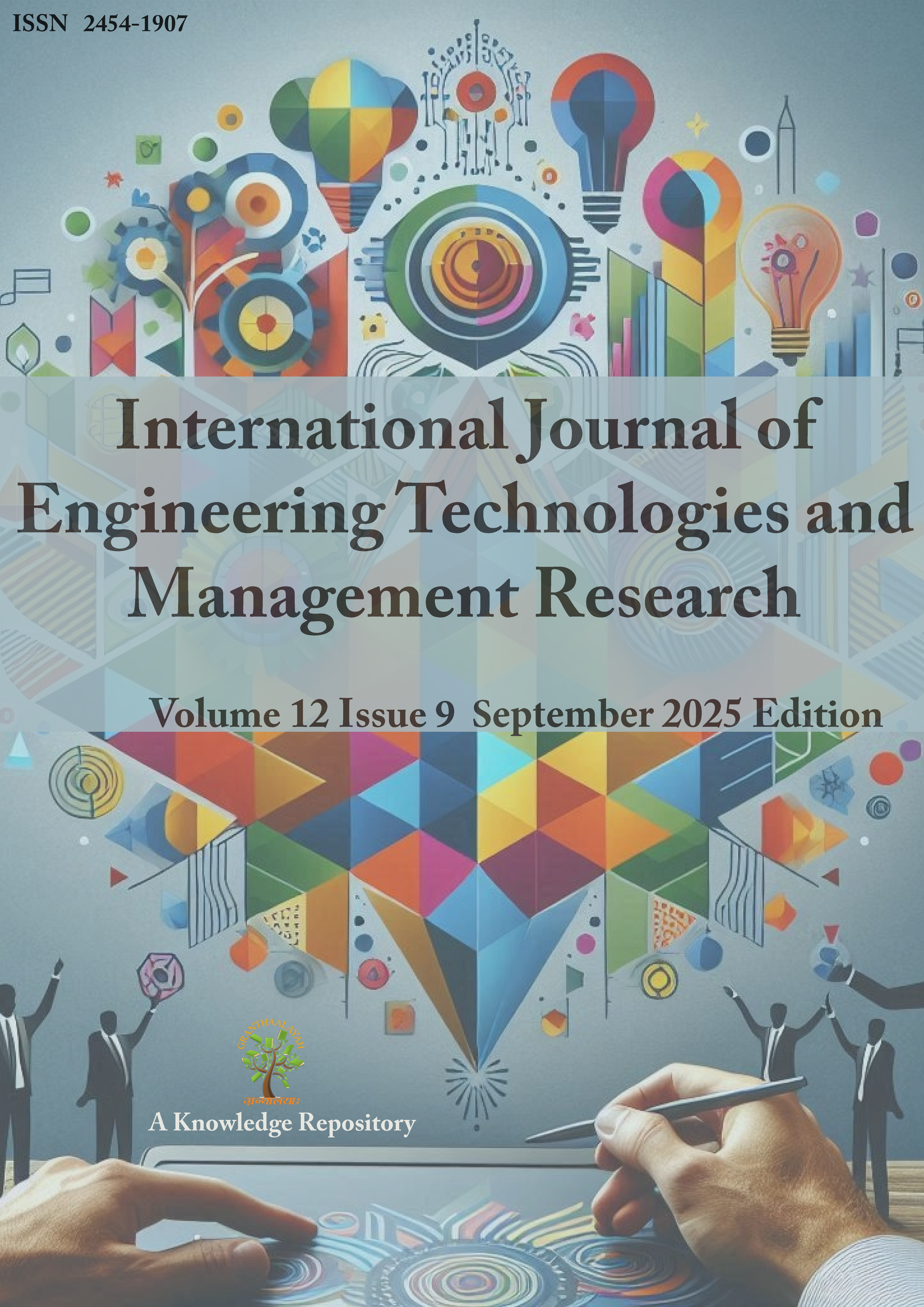IMPACT OF URBANIZATION ON SOCIAL STRUCTURES: A CASE STUDY OF ROHTAK DISTRICT
DOI:
https://doi.org/10.29121/ijetmr.v12.i9.2025.1674Keywords:
Urbanization, Social Structures, Rohtak, Family Dynamics, Migration, Socio-economic Mobility, Infrastructure Development, Social Inequality, Rural-Urban Divide, Cultural PracticesAbstract
Urbanization has significantly transformed social structures across the globe, influencing various aspects of life such as family dynamics, community interactions, economic participation, and cultural practices. This study explores the impact of urbanization on the social fabric of Rohtak district, Haryana, with a focus on changes in societal norms, mobility, and social hierarchies. Using a mixed-methods approach, this paper analyzes demographic trends, shifts in employment patterns, and alterations in family structures and social interactions due to urban expansion. The research finds that urbanization in Rohtak has led to increased migration, particularly among youth, which has affected traditional family systems, and has contributed to the rise of individualism while challenging collective cultural practices. Additionally, the study highlights the role of infrastructure development and access to education in reshaping social inequalities, with urban areas exhibiting greater socio-economic mobility compared to rural regions. The findings provide insights into the broader implications of urban growth on local social systems, contributing to discussions on sustainable urban planning and its social consequences.
Downloads
References
Awasthi, A., & Kumar, R. (2012). Urbanization and its Impact on the Rural Economy in India: A case study of Haryana. Journal of Rural Development, 31(2), 55–70.
Bansal, S., & Verma, R. (2013). Urbanization and Changes in Family Structure: A Study in urban India. Indian Journal of Social Research, 45(1), 102–118.
Chatterjee, S., & Das, M. (2014). The Effects of Urbanization on Community Structures in Indian cities: Evidence from Haryana. Urban Studies Journal, 51(4), 833–849.
Das, M. (2015). The Migration Trends in Small Towns: A Case Study of Rohtak. Asian Social Science Review, 26(3), 59–73.
Ghosh, P., & Singh, V. (2016). Urbanization and its Impact on Family Dynamics in Indian cities. Journal of Population Studies, 21(4), 45–60.
Gupta, S., & Sharma, P. (2017). Economic Transition and Employment Patterns in Urban India: A Case Study of Rohtak. Indian Economic Journal, 67(2), 220–236.
Jain, R., & Rani, A. (2018). Family Structure Changes and Social Mobility in Indian Cities. Social Change and Development Journal, 33(1), 112–128.
Kapoor, A., & Jain, N. (2019). The Role of Infrastructure Development in Promoting Urban growth: Insights from Rohtak. Infrastructure Development Quarterly, 14(3), 45–60.
Kumar, D., & Yadav, M. (2020). Urban Migration and Demographic Shifts in Haryana: A Case Study of Rohtak. Journal of Urban Migration Studies, 8(2), 32–47.
Kumar, V., & Singh, S. (2020). Social Inequalities in Urban Areas: An Analysis of Rohtak’s growth. Indian Journal of Social Sciences, 12(2), 87–99.
Malhotra, R., & Gupta, S. (2021). Urbanization and Socio-Economic Change in North India: A Study of Rohtak District. Geographical Review of India, 89(1), 78–92.
Mehta, A., & Sharma, R. (2022). The Impact of Urbanization on Youth Migration in Haryana. Youth Studies Journal, 13(4), 245–258.
Mishra, A., & Gupta, S. (2016). Economic Transition and its Impact on Employment in Urbanizing India: The Case of Rohtak. Economic Growth and Development Journal, 22*(1), 56–69.
Nagar, D., & Singh, J. (2013). Family Dynamics in Urban India: A Case Study of Changes in Rohtak. Sociological Review, 49(2), 210–226.
Patel, M., & Yadav, S. (2017). Rural-urban Migration Patterns in Haryana and their Impact on social structures. Asian Journal of Social Sciences, 29(3), 189–203.
Prasad, R., & Sharma, G. (2020). Urbanization and Infrastructure Development in Haryana’s Growing Cities. Urban Planning and Policy Journal, 41(3), 63–77.
Raj, S., & Ghosh, A. (2019). Exploring Social Inequality in Urbanized Regions of Haryana: A case study of Rohtak. Journal of Social Inequality Studies, 15(2), 98–113.
Rani, V., & Kumar, M. (2021). The Economic Effects of Urbanization on Local Communities in Haryana. Economic Development Review, 34(4), 147–160.
Sharma, R., & Kumar, P. (2018). Infrastructure and Social Change: The Case of Rohtak’s urbanization. Journal of Urban Planning and Development, 14(5), 105–120.
Singh, J., & Mehta, S. (2014). Impact of Urban Migration on Rural Communities in Haryana: A Study of Rohtak District. Indian Journal of Rural Studies, 22(3), 199–214.
Published
How to Cite
Issue
Section
License
Copyright (c) 2025 Dr. Raju Kumar

This work is licensed under a Creative Commons Attribution 4.0 International License.
License and Copyright Agreement
In submitting the manuscript to the journal, the authors certify that:
- They are authorized by their co-authors to enter into these arrangements.
- The work described has not been formally published before, except in the form of an abstract or as part of a published lecture, review, thesis, or overlay journal.
- That it is not under consideration for publication elsewhere.
- That its release has been approved by all the author(s) and by the responsible authorities – tacitly or explicitly – of the institutes where the work has been carried out.
- They secure the right to reproduce any material that has already been published or copyrighted elsewhere.
- They agree to the following license and copyright agreement.
Copyright
Authors who publish with International Journal of Engineering Technologies and Management Research agree to the following terms:
- Authors retain copyright and grant the journal right of first publication with the work simultaneously licensed under a Creative Commons Attribution License (CC BY-SA 4.0) that allows others to share the work with an acknowledgment of the work's authorship and initial publication in this journal.
- Authors can enter into separate, additional contractual arrangements for the non-exclusive distribution of the journal's published version of the work (e.g., post it to an institutional repository or edit it in a book), with an acknowledgment of its initial publication in this journal.
- Authors are permitted and encouraged to post their work online (e.g., in institutional repositories or on their website) before and during the submission process, as it can lead to productive exchanges, as well as earlier and greater citation of published work.
For More info, please visit CopyRight Section





















